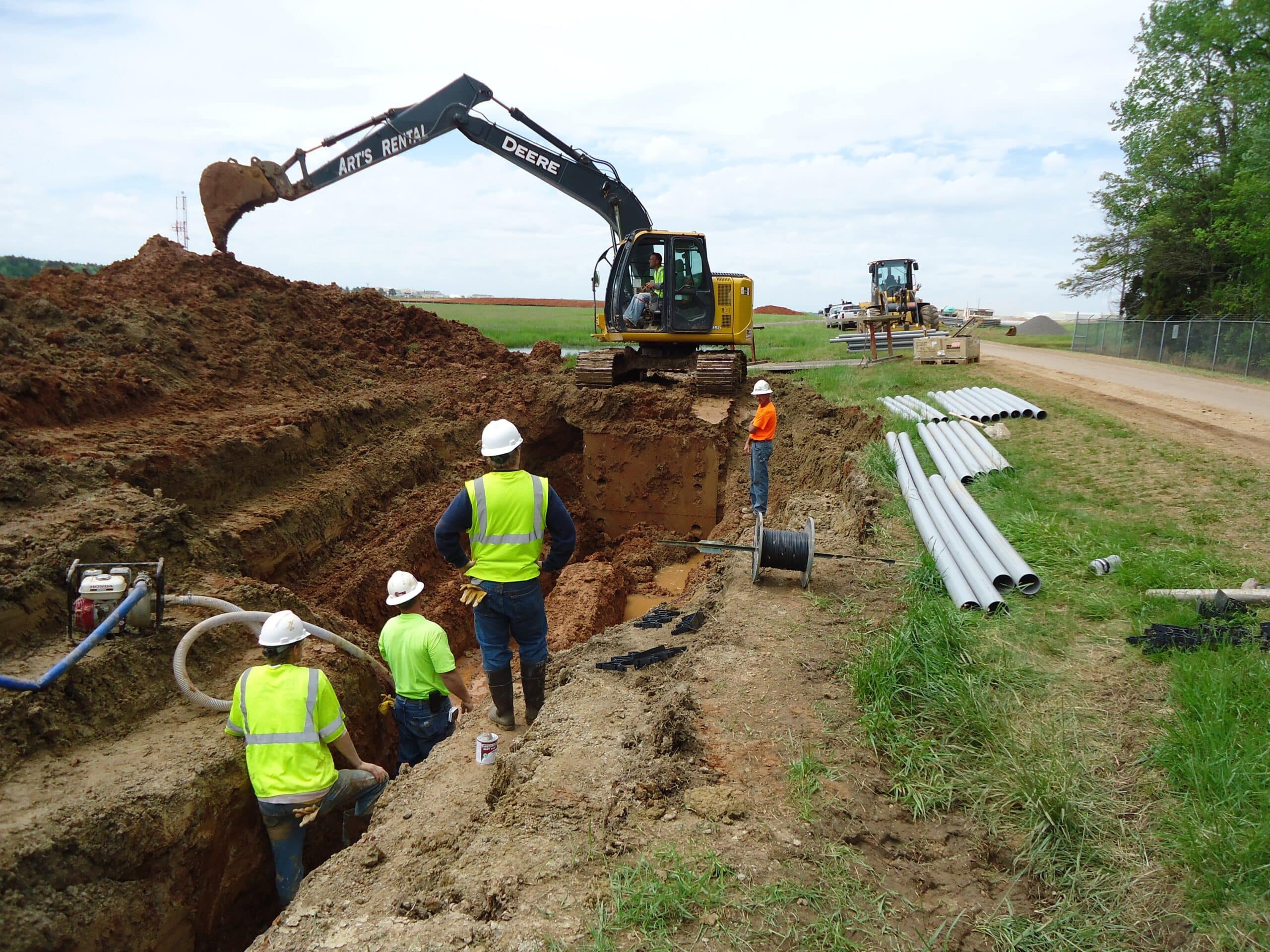Trenching Safety Updates

An increase in trench-related work fatalities has caused the Occupational Safety and Health Administration (OSHA) to update their policies regarding trenching and excavation safety. In 2016, OSHA reported 23 construction workers were killed in trench collapses and accidents- more than the total for 2014 and 2015 combined. Most recently in New York City, a construction worker was killed after a wall collapsed on a worksite in Brooklyn this September, burying the worker beneath the rubble of the structure.
The Dangers of Trenching and Excavation
Trenching and excavation projects are extremely common in the construction industry. Unfortunately, trenches and deep pits on job sites can also prove to be deadly hazards, particularly when proper safety precautions are not taken.
Accidents posing the greatest risk of injury or death to construction workers as highlighted by the OSHA Fact Sheet on trenching and excavation safety include:
- Cave-ins (most fatal)
- Falls
- Falling loads
- Hazardous atmospheres (lack of oxygen or proper ventilation)
- Mobile equipment accidents
An excavation (any man-made cut or depression in the earth’s surface made by removing the earth) or trench (any excavation that is a maximum width of 15 feet and is deeper than it is wide) should never be left unprotected. One cubic yard of soil is reported to weigh as much as a car, leaving workers left with little hope of survival in the event of a cave-in or structural collapse.
New Federal Safety Updates
In an effort to help reduce the number of trench-related deaths in the construction industry going forward, OSHA made recent updates to their National Emphasis Program (NEP) on trenching and excavation safety that construction employers and employees should both we aware of. The purpose of the NEP is to lay out the policies and procedures to identify and reduce hazards on the job that could cause serious injuries and fatalities during projects involving trenching and excavation.
Effective October 1, 2018, the new updates to the NEP aim to…
- Increase education and enforcement efforts on trench and excavation safety practices.
- Provide inspectors with a national reporting system for recording trenching and excavation inspections.
- Develop outreach programs for each OSHA area office and region to support the NEP.
- Provide compliance assistance in outreach programs for employers and organizations.
OSHA reports their outreach programs will be active during the first 90 days after the updates became effective at the beginning of this month. After this period, inspectors will begin to enforce the new changes during site visits. Trench work in New York is also regulated by the New York Industrial Code. This and other OSHA State Plans across the country are expected to match the procedures and updates outlined in the new NEP to help increase trench safety in all sectors of the construction industry statewide.
Increasing Awareness on Trenching Safety
Leading up to the new NEP policy updates, OSHA released a number of resources for the public to utilize to help spread awareness regarding trenching safety. The Quick Card is a condensed safety notice focusing on preventing trench collapses and helping employers to implement a protective system for trenches using SLOPE, SHORE, and SHIELD. Another helpful tool is a public safety video titled 5 Things You Should Know to Stay Safe in a Trench, advising construction employers and employees to use the following safety measures to help reduce trench accidents and injuries:
- Ensure safe entry and exit.
- Make sure trenches have cave-in protection
- Keep materials away from the edge of the trench.
- Look for standing water or other hazards.
- Never enter a trench unless it has been inspected.
The serious risks that trenching and excavation operations can pose on construction workers should never be taken lightly, and neglecting safety practices in these areas is only beckoning unnecessary disasters.
Experience NYC Construction Accident Attorneys
It only takes a split second for a trench to collapse and a life to be changed forever. A fall into a trench can represent a violation of New York Labor Law Section 240(1) and / or Section 241(6) depending on the facts of the accident and the nature of the jobsite and trench. Under such circumstances, owners and general contractors are responsible for making sure such accidents don’t occur and making sure trenches are dug and protected according to code and statute.
When a worker is exposed to such a dangerous and unguarded / unprotected condition which results in a worker falling into an unguarded trench or a trench collapsing causing a worker to fall into the trench in the process, that worker has rights under New York’s Labor Law which allow him or her to seek a recovery in Court beyond simply receiving workers compensation benefits for an on-the-job accident.
If you have been seriously injured or lost a loved one in a construction accident involving trenching or excavation, contact the law firm of Pazer, Epstein, Jaffe, and Fein for justice. Our experienced construction injury attorneys are seasoned in defending the rights of NYC workers and maximizing deserved compensation for all damages suffered in catastrophic occupational accidents.
Contact us using our convenient online form or feel free to phone us in New York at 212-227-1212, or in Huntington/Long Island at 631-864-2429.
Related Posts
Categories